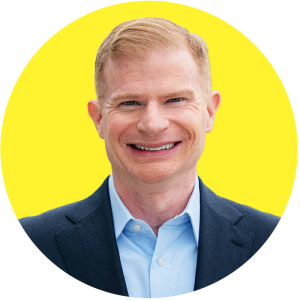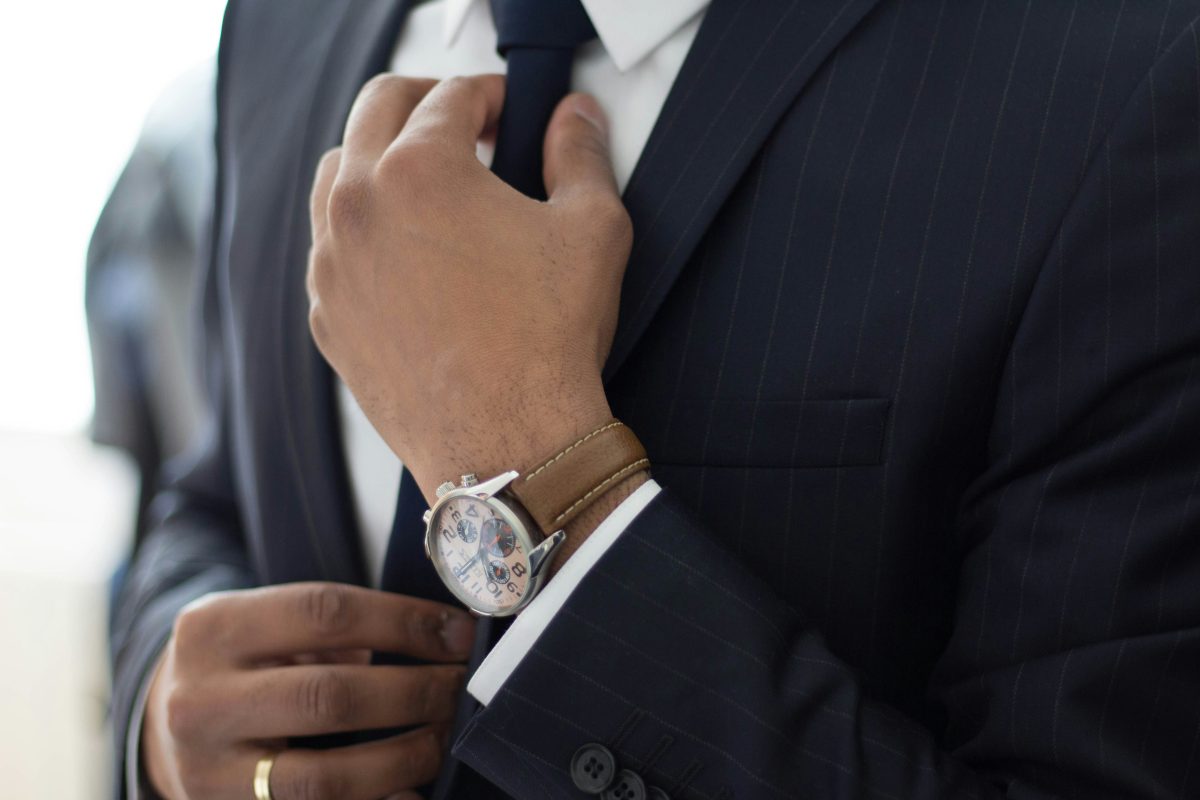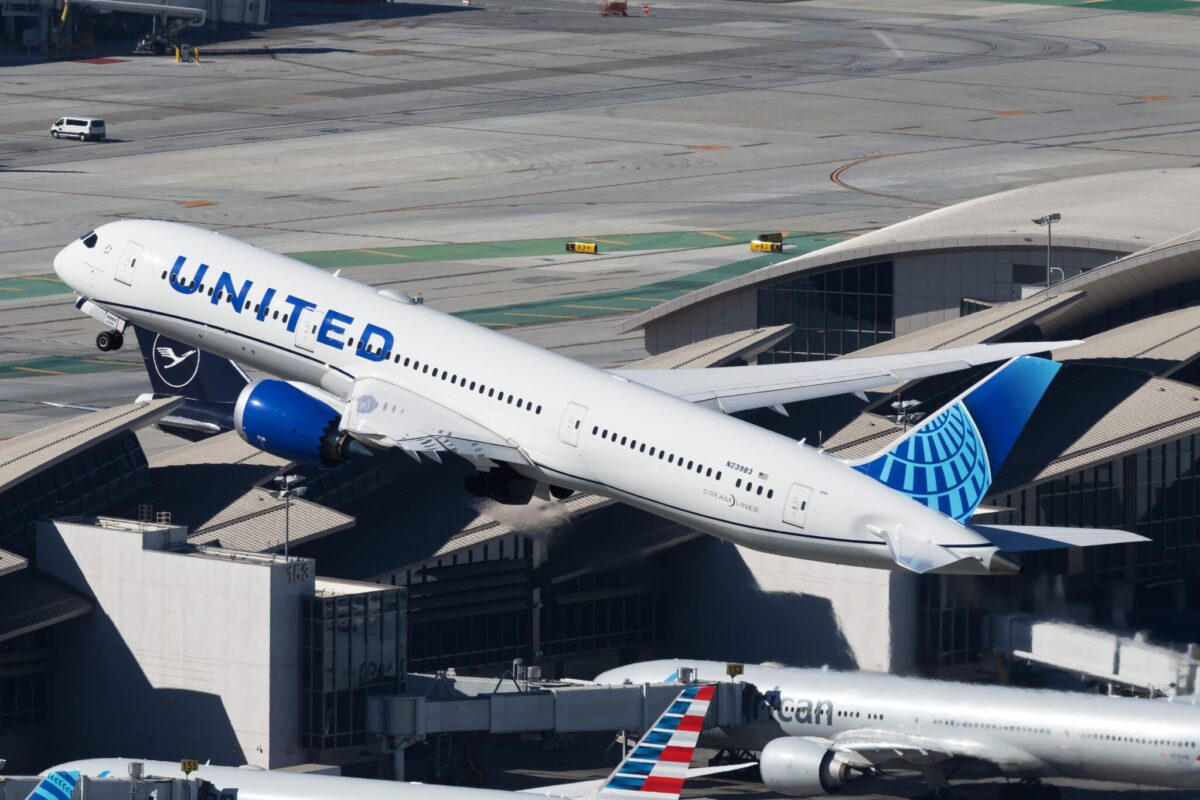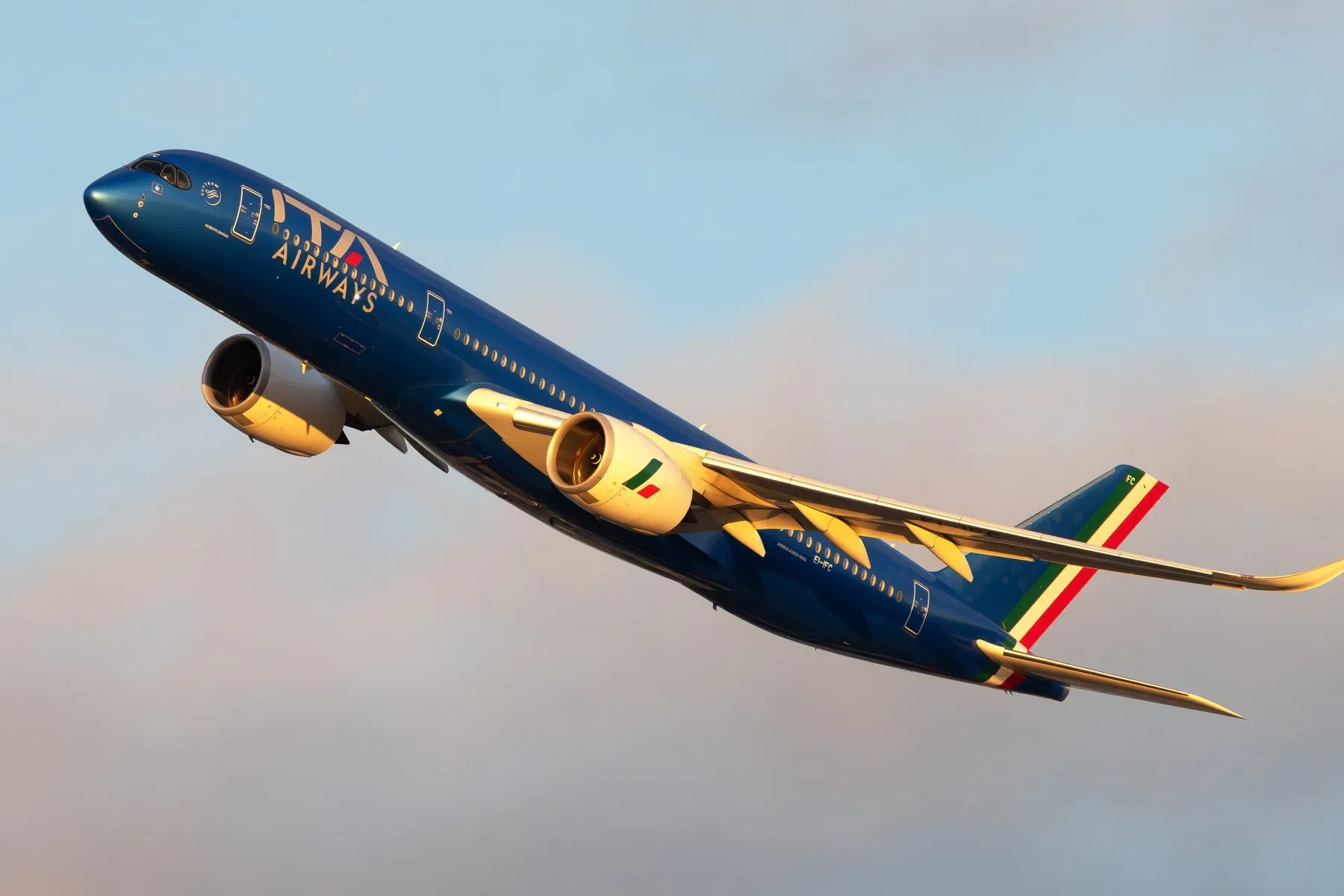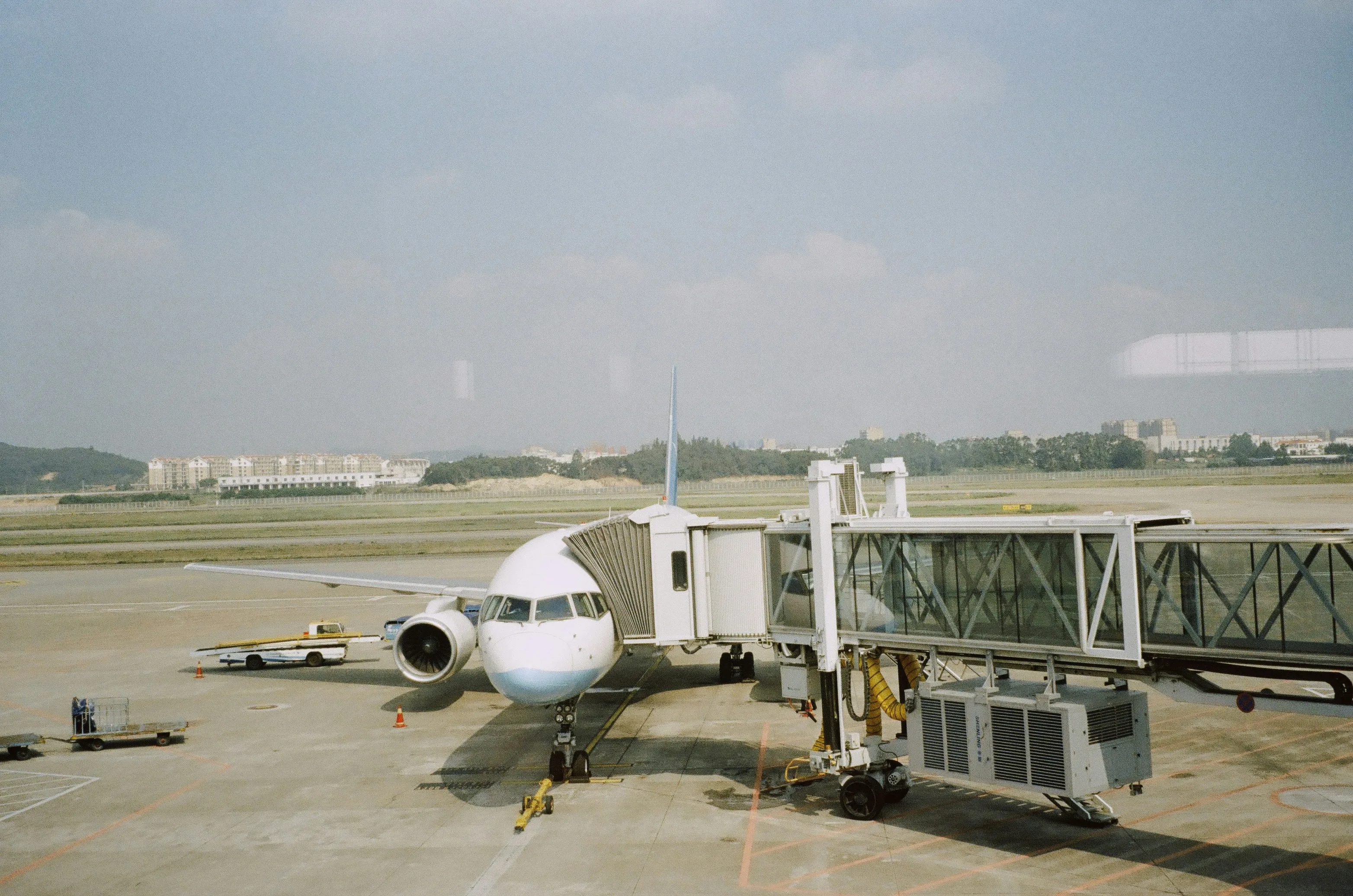Hyatt CEO Mark Hoplamazian Links Empathy With Hotel Growth — Full Video
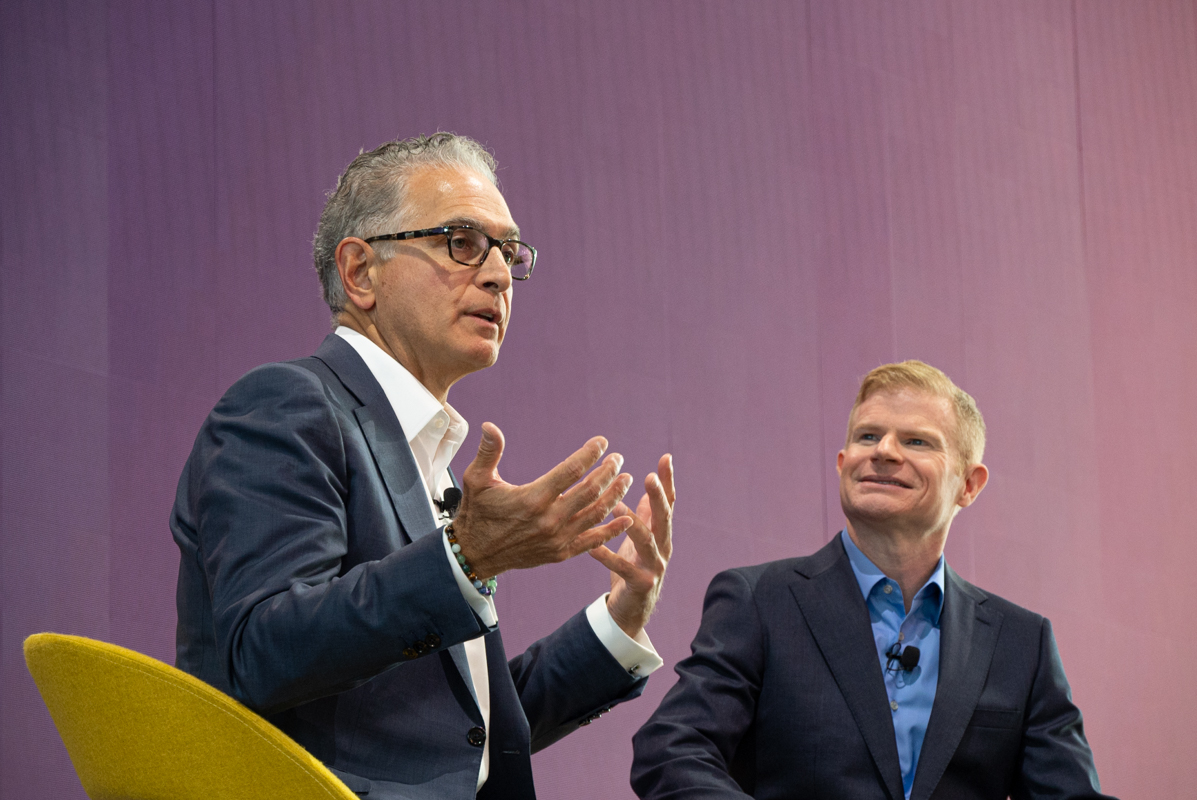
Skift Take
Mark Hoplamazian, president and CEO of Hyatt Hotels Corp., rhapsodized last week about how the hotel giant uses empathy as a tool for everything from fostering company culture to strategically analyzing acquisitions and brand development.
Hoplamazian particularly stressed that human connection remains the essence of what hotel staff need to provide travelers — especially in an era where digital tech and automation are making life a virtual hamster wheel.
Hyatt's top boss made the remarks on-stage at the Skift Global Forum in New York City on September 27. (See video and transcript of the interview below.) During the interview, Hoplamazian also underscored business travel's rebound — citing especially surprisingly high bookings for New York City in October.
What's more, Hoplamazian explained why Hyatt entered the mid-market segment with the new brand Hyatt Studios. He covered the company's strategy in China, its aspiration for carbon reductions, its plan to hire 10,000 youth from underserved communities by 2025, and why he believes leisure travelers will make up a larger share of Hyatt's customer base for years to come.
Interview Transcript
Sean O'Neill: Hey, Mark, thanks for joining us today.
Mark Hoplamazian: It's a pleasure. Thanks, Sean.
O'Neill: The theme of Skift Global Forum this year is about how human-to-human connection was the original promise of travel. But we have all this talk of generative A.I.. We have digital tech. As I was joking with Mark earlier, you know, you go on vacation, and everyone's just staring at their phones. So there was something that you said, Mark, eight years ago when you were on stage and. Skift Global Forum, that I thought was really relevant on this point. So we're going to play a clip now from what you said.
Hoplamazian: (Recorded): So as we think about applying empathy in our business, we think about it as the essential capacity to bring humanity back into hospitality. At Hyatt, we have an equation that we use, and it's an equation that we put together to remind ourselves to reverse perspective, practice empathy, and combine it with action. So it's a call to action. So it goes. Empathy plus action equals care. And care is really the essence of what we stand for. It's it's why we as a company, we care for people so they can do their best. And when we're at our best and when our industry is at its best, we can actually fulfill that mandate.
O'Neill: So eight years ago. My empathy there: you look the same. I don't know what you're doing. So today, how do you use it at Hyatt — that kind of equation today for human-to-human connection?
Hoplamazian: Yeah. So first of all, hi, everybody. It's great to see such a robust crowd here. And what a beautiful venue. And thank you, Sean. And to Skift.
Look, it's probably more intensely focused on today than it was eight years ago. It has become sort of the underlying fibers of the fabric that make up our culture as a company.
We call it — Anybody and everybody affiliated with Hyatt are members of the Hyatt family. Because it's a very familial set of relationships. It's more emotionally based than it is transactional. And Covid actually put this to the test because you can imagine we declared we declared our purpose back in 2015. And soon after Covid, within a month, we were faced with widespread shutdowns and a very, very uncertain future. We had to make the most excruciating decisions we've ever made about reducing our staff and our team members, and so forth.
And the question that I really struggled with was, you know, how can you have a purpose as a company which is to care for people so they can be their best and yet take actions like laying off people? How do you reconcile that?
And what I realized — and I had some help from a famous physicist called Niels Bohr who said sometimes the opposite of a fundamental truth is not a falsehood, but another fundamental truth. In that case [Covid], we had an existential threat, something that we thought we needed to do to ensure that we had a future and at the same time we had to care for people.
So we said, great. Like, we don't think we have a choice. This is the decision we've come to, and we have to maintain this responsibility to care for our people. So we set up a care fund. I think we distributed over $18 million to individuals who needed additional help. We helped. We created a digital platform.
All those things came to life, and we came out of Covid. My board asked me, What are you most worried about? And I said, "What I'm really worried about is that we're wrong and we've taken this dire action for, you know, for no good reason, like Covid's over in two months. I don't ... I really don't know emotionally whether I could continue because the amount of pain and disruption that we would have created."
But we did everything that we possibly could to help support our colleagues, both those who left and those who stayed. Those who stayed had a hard time too.
And so I would say we came out of Covid more committed to our purpose and more proof points around what it means actually to care for someone. So I would say it's it's super strong. And it is it is our North Star as a company.
O'Neill: I like that explanation. I think it's a natural segue to go to some community engagement program that you're very passionate about, which is RiseHY. What is it, and why is it relevant to the audience?
Hoplamazian: Yeah, I think, look, one of the things that I think we all experience in different places around the world, and you've seen in places like New York City where it's quite acute, and places like Chicago where I'm from, where it's very acute.
There are a number of different realities for individuals, especially those living in underserved and underinvested communities. And we see in stark contrast in places like India and in, um, in Brazil, frankly, in the United States — where you've got a lot of underserved people, and the gap in income and the gap in wealth and also the gap of opportunity is so vast that you end up with really a cognitive dissonance about what community really is all about.
And in our business, if I think about future-proofing hospitality, one of the key things we all have to focus on is caring for our communities and making sure that we're helping to get those who are most disadvantaged and don't have access to opportunities and jobs.
And in our business, we have so many opportunities to bring in people who have such a limited skill set. In fact, no skills, to start a job at an entry-level, learn skills, develop, and then be able to have successful careers.
I've got a member of my direct reports who started as a trainee out of college. Now that's already four years advanced for many of the people that we're trying to hire.
So we're focused on opportunity youth, 16 to 24 years old and going into these underserved communities, employing them, pulling them into Hyatt...
And we made a commitment to hire 10,000 opportunity youth by 2025. We're well on our way to doing that, but we're seeing how we can leverage that further and do that at a higher rate.
And 2025 just happened as it happens to be a marker. It's something that I think we as an industry can do that would make a huge impact in the world. So that's that's what RiseHY is.
O'Neill: It's an ambitious goal. If you want to Google that, it's RiseHY.
Hoplamazian: That's right. RiseHY.
O'Neill: So I wanted to ask a big-picture question and a couple of Hyatt strategy questions. So I think everyone in this room is wondering how long will the post-pandemic travel boom continue and go on for? Hyatt is a proxy for that, to a certain extent.
Earlier this month, at an investor conference, you gave a couple of numbers. You know, you said that leisure is back. Compared to 2019, leisure is back better than 100%. Group travel is 100% back, and the story's improving. Large corporates are at 90%. And then business transient is like your smallest segment and is like only about 86% and also improving. So how long will this boom go on for?
Hoplamazian: Well, we happened to be sitting in New York City, and the other thing I observed on that trip when I was here is what I was hearing from our hotel teams about locals or not locals, but people coming into the restaurants and venues that we've got in our hotels who were travelers coming to the city and also locals.
And I'm thinking, so if you're seeing a higher incidence of people like kicking off after work and grabbing a drink, that means there are more people in offices.
And I was stunned. I just looked at some data yesterday. Our bookings into October for business transient travel in New York are up 20% over 2019 levevls.
O'Neill: 20% over 2019 levels?
Hoplamazian: Which is shocking.
O'Neill: Yeah, I'm surprised.
Hoplamazian: Just shocking. And we were all wondering, like, is this going to be — are we going to see business transient really like kind of like in a sideways motion for an extended period of time?
So, look, we all know one month does not a trend make. You know, October is a very, very busy month. It's probably, I mean, yes, there's U.N. General Assembly week in September, but October is always the busiest month of business transient travel.
So I'm not going to extrapolate and pretend that that's what it's going to look like forever.
But neither is it true that Bill Gates, who in August of 2020 said business travel will permanently be reduced by more than 50% for every major corporation in the United States. It's Bill Gates, after all. And everyone thought, Oh, he must be right. In this case, not so much.
Um, so I think this, yes, it's been a boom. I think if you really want to disaggregate that, the boom has really been in leisure. And that's now normalizing seasonally because last year Omicron killed the first quarter, and then the second and third quarters had so much pent-up demand.
Now this year, things are going back to a more normal kind of seasonal profile. But group business is really just booming at this point as we look into next year.
Case in point, [points at audience] right? You're all here for a reason. You could do it. You could just, you know, plug in but you're not. Why is that? You can answer that for yourselves.
That's happening across so many companies and organizations, and associations. The power of human connection can never be underestimated. And I think that's what Bill Gates missed. He really missed the idea that human-to-human connection is actually the essence of what makes creativity work, where it makes personal relationships rich and enduring and really elevates sort of the human spirit. So that's super powerful stuff.
And I think that's what's going to sustain travel now.
So I don't think that I think we're going to start to normalize, but I see no evidence of rate declines that are going to be significant. I see we have significant gaps still relative to pre-pandemic levels in occupancies.
And world travel, that is, international cross-border travel. America to Europe and vice versa? All good.
Asia is at a fraction of what it used to be. So that's the next big incremental travel base that I think is going to sustain us into further sustained performance.
O'Neill: Cool. So it's been busy in the five years since you were most recently at Skift Global Forum. In those five years, you've revved up the metabolism of Hyatt. So it now has the fastest hotel development pipeline of any of the major hotel groups. You've doubled the number of luxury properties you've had. Tripled the number of all inclusives. Quadrupled the number of lifestyle hotels.
I did a snap poll question of a friend of mine. I was saying like, what does Hyatt mean to you? And the first association was JPMorgan having a holiday party at an urban hotel within a glass atrium.
Your strategy seems to have pivoted. So what should we understand about your strategy?
Hoplamazian: Yeah, I think, frankly, the strategy was derived from the customer base that we serve and what their needs are. Every ... everything that we've ever looked at buying as an M&A matter or developing has been through the lens of the customer base that we can serve, a customer base that we know well but want to know better and deeper and broader.
And secondly, if it is a customer base that is similar to our existing customer base, which is at a high end, I mean, we serve more high-end travelers than we do the full measure of all travelers across all the segments in our industry, if they're at that higher level of spend rate, is it an expansion of our existing customer base?
I'll just give you a couple of examples. I mean, we've done quite a few deals. We bought Miraval, we bought Two Roads Hospitality, which brought Thompson Hotels and Joie de Vivre, Alila Hotels & Resorts and Destination Hotels. Then we bought Apple Leisure Group.
In all cases, we started with these questions: "What's going on with the customer base? Is this something we can understand, and how do we actually evaluate the culture of the company?"
Because the underlying culture is critical. When culture is going well, anything is possible. And when culture is kind of like fits together like this [gestures two hands not connecting] nothing is possible. Everything just stops and you end up with friction, and it's not good.
So thankfully, we actually, I think, evaluated those, at least those three acquisitions, correctly.
But in the case of Dream Hotel Group, which is our most recent acquisition, it had a very similar demographic from an income household income level, 20 years younger as the average age of guests.
So we thought, well, that's an interesting dynamic because that's an expansion of a customer group, sort of the generation below, if you will, of the average age of customers across our system. But, they're high earners, and they travel a lot, and they spend a lot on travel. So we thought, okay, this is a fantastic opportunity to actually broaden our reach and really engage in that way.
But we did look through the lens of absolutely deciding we needed many more resorts and leisure-focused hotels. Two Roads Hospitality, in general, was 75% focused on leisure, 25% focused on business. Hyatt was exactly the inverse of that. We were at that time 25% leisure and 75% business.
Apple and Leisure Group is nothing but a resort company. I mean, it's all leisure.
And Dream is actually much more of a balance of about 60/40, 60% leisure and 40% business travel.
So we made an affirmative decision to go in that direction.
We also looked at our own pipeline, and the fastest-growing brands that we had in our pipeline were more lifestyle hotels. So that's really the.... It wasn't rocket science, basically. It's just really being thoughtful about what we're seeing and what we can execute and how we actually can bring that to life.
O'Neill: You're following the customers.
Hoplamazian: Yeah, exactly.
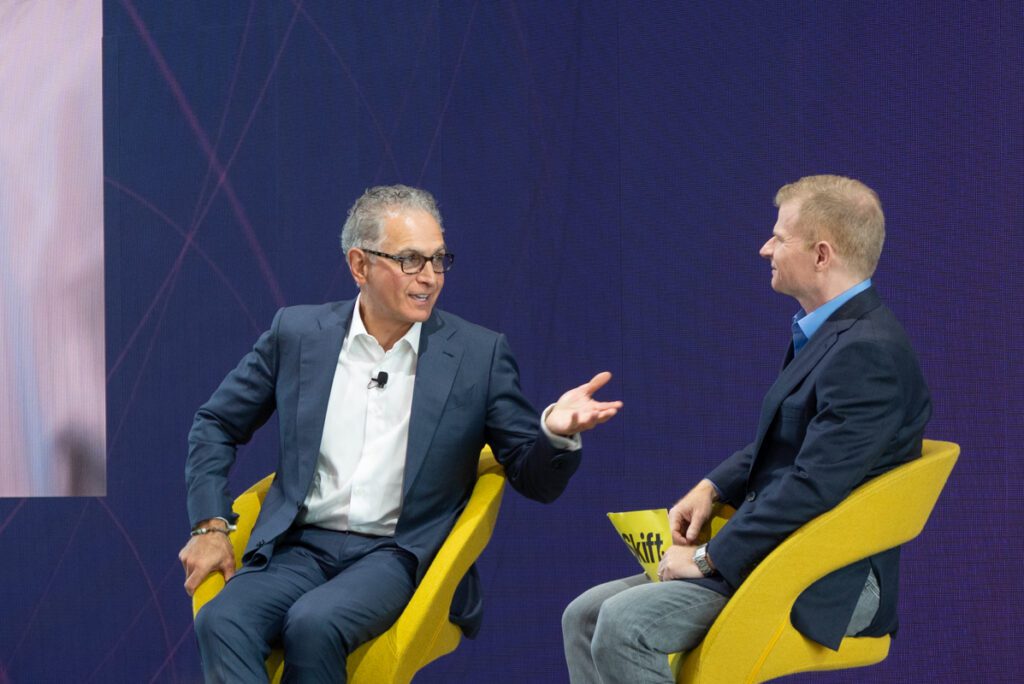
O'Neill: I guess there's some news today that Marriott has introduced a new midscale brand, Four Points Express by Sheraton. And then I was speaking with the Hilton CEO, Chris Nassetta, last night. He was talking about this year they launched two new brands in the mid-market. You have a new brand, Hyatt Studios?
Hoplamazian: Yeah.
O'Neill: And that is also in the mid-market. And that's not the classic luxury, some of the products that people most associate with Hyatt. So is this the way that Hyatt is going to sort of fill out the brand grid in order to continue to grow by sort of going down the scale?
Hoplamazian: So this will not surprise you to hear that. What did we start with? We started with our guest base. And we looked at we looked at our loyalty members and said, how much are they spending outside of our system?
And we got some remarkable data that we were able to derive a lot of information from. And it turns out that actually even our best loyalty members spend more outside of our system than in our system.
O'Neill: Interesting.
Hoplamazian: Yes. So I was, of course, dismayed and shocked by that revelation. And I said, okay, so the good news... The bad news is that's not good. Like we should be more represented. We should have more representation where our guests are traveling.
And secondly, what a huge opportunity. Like we have a massive amount of, you know, wallet share of their wallet to grow into.
And we did a lot of work on it and came up with the conclusion that over two-thirds of those travelers, when they were staying outside of our system, there was no Hyatt within five miles of the place that they stayed and they also were staying at a lower price point of hotel.
By the way, those things are not just coincidences. They are actually relevant coexisting conditions because many of the markets in which we have no representation are markets in which you can only find the midscale brand because we have the same penetration in gateway cities around the world as our big, big competitors like Marriott and Hilton and so forth.
But when it comes to suburban interstate tertiary markets, we fall off the map because we have nothing. Because you can't really build a Hyatt Place or a Hyatt House or another upscale brand in a lot of those markets and have the math work.
So we thought, okay, well, how do we actually enter that market? It has to be adjacent to where we are today. I think companies who have bimodal distribution of activity and loyalty members, it doesn't work as a network.
So we wanted to be directly abutted to where we stand at the moment. So it's really the extension down by one notch in segments, but it had to be a differentiated Hyatt version of an upper-midscale, extended-stay product.
So we applied agile practices like you might find in software development to brand launch. Just to give you a rough comparison. It took us 21 months to get Hyatt Place launched, even after we bought a Amerisuites, which came with 140 hotels, 21 months from the time we closed the deal to the time that the brand was actually launched. In this case, [Hyatt Studios] it took us less than five.
O'Neill: Less than 5 months compared to 21 months before.
Hoplamazian: Now that was 2007, and this is obviously 2023. B,ut we did it through an agile process and we had weekly retros. Sorry for those of you who are not software developers, just like recaps.
We did stand-ups, we had workstreams but each one of them was set up as a pod of cross-functional people. Real-time decision-making. And we moved extraordinarily quickly, including having a finalized brand, with logo, IP protected, etc..
So our first groundbreaking is in two months. So this has been like a real vision from our perspective about what's possible in terms of how you move quickly and how you differentiate based on, I would describe it with an old phrase from [the consultancy] BCG, "time-based competition."
How do you how do you actually create a response time as a competitive advantage? So the customer that we expect to serve is largely sorry, our own, plus a bunch of others that will be new to Hyatt because they frequent those markets, but they don't see us there. So that's really where it came from.
O'Neill: I like that. I think the hotel sector gets dinged from time to time about not adopting techniques from outside of not being on the cutting edge, but overlaying an agile software developer model on brand development I think is a great innovation. I remind everyone in the audience, please upvote the questions and we'll get to some audience questions. And if you haven't already asked one, feel free to add. So Mark, I have a question on sort of related to climate. Last week, you mentioned it, the U.N., the U.N. secretary general said that humanity has opened the gates to hell by not reducing carbon emissions fast enough in order to avert a crisis.
And Skift Research, my colleagues, have done a report earlier this year comparing the different hotel groups on how they're doing in terms of measuring and then reducing carbon emissions. Very good performance at the corporate level. Very impressive. But when the report looked out at the whole industry and all the brands, independents, worldwide when it comes to development and also most particularly operations, people are not measuring — overwhelming majority. You're not measuring, let alone reducing. So with governments not acting in a fair, consistent, or ambitious manner on this, what is the next step for the industry that you might like to see?
Hoplamazian: I think in some ways during the pandemic, for example, just by way of analogy, we established I was chairing the American Hotel & Lodging Association at the time. We established the standard cleanliness, standard cleanliness that we wanted to have. And I said to all the other brands, this is not we're not going to distinguish one from the other in terms of how clean your hotel is. So let's actually get together and actually provide what the public needs to know is that it's safe to enter a hotel and that the industry has gotten behind these standards. And when you see that the hotel is abiding by the standards, it gives people confidence. That's great for the entire industry.
So let's do that, which is what we did. I think we are fast getting to a point where a similar standard needs to get applied. It's under development in different ways now.
One issue with the hotel business that you don't have, for example, on airlines, you do to a certain extent, but maybe less acute or other vertically integrated companies where you actually own or lease your locations. We have an owner who owns the property, and then we have a manager.
So to your point, it's about the building, and it's about the operations. So I think we can probably align our operations. I'm not sure that we I mean, yes, there are LEED certifications, but there's no mandate that says you have to be certified at this level.
So I think that the standards that we will likely start with are operational, and over time, with the application of more and more green building practices, we need to make sure that we're staying abreast of that and helping our developers find those solutions.
O'Neill: Okay. We have an audience question. Hyatt Globalist seems to have a cult following. What do you think are the keys to building a successful loyalty program?
Hoplamazian: Empathy. Okay. I mean, honestly, sorry to be a one-note person, but, you know, during the pandemic, we reached out to our highest-ranked elite members. And we checked in with them not because they were trying to travel, because they weren't traveling, but just to find out what they were doing. We didn't. We have a core group of customer service colleagues who face that elite customer base, and that's what their job was for like three months.
And we even sent out, like, care packages from the last city that they visited. Um, just different things to help them remind themselves of travel and how great it is and what they can think about the future in the midst of like so much torment and all and things like that.
We did the same for corporate customers. I spent a lot of time on Zoom calls with C-suite executives from our top ten customers just checking in, like, how are things going? What's happening in your business? What can we be doing? And we gained market share with 90% of it.
And the reason I think is because we went towards that with that as our behavior in COVID. And I think that's really a long, long answer to the short question, which is why is it working?
Well, I think the answer is because we're really deadly serious about the practice of empathy, like it's part of our fabric of who we are.
O'Neill: No other major hotel group has made such a big bet on China. China, because 40% of your pipeline is in domestic China. Given the evolution of geopolitical tensions, that unfortunately might happen, do you have any concern that domestic Chinese travelers may avoid U.S. brands in the coming years?
Hoplamazian: It is something that's on my mind. I haven't seen any evidence that that's the case. I think one of the things that we, uh, that we focused on when I was established in Asia back in 1968 was we had to have phenomenal food and beverage operations. We had to have the best cuisine. We had to represent local cooking styles. And so we became known across most of our Asian hotels as having excellent food and great venues.
You know, some of my Chinese colleagues like to say the best way to the heart of a Chinese person is through their stomach. So that's that's worked really well. And it's it's kept us relevant to the Chinese population.
Now, do I expect that governments will step in and tilt the scale in some way, shape or form? I don't I mean, we're not a strategically sensitive industry, so I don't think so.
And so as long as we do things that are people-focused at the human level, right, for people that we touch every day, I think we'll be fine.
